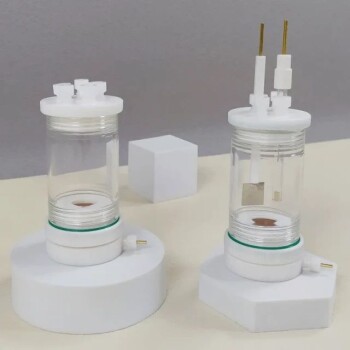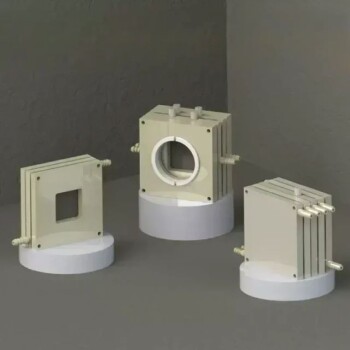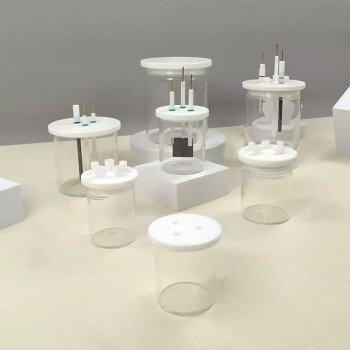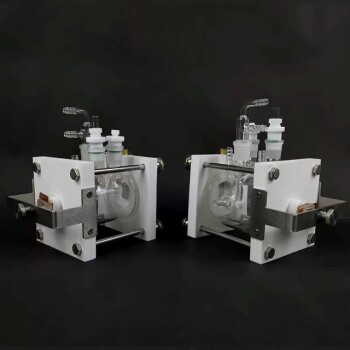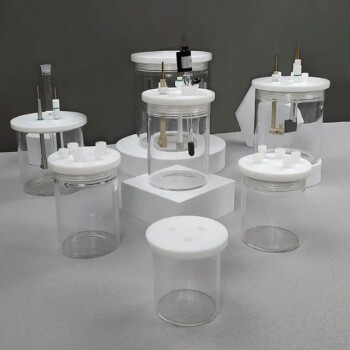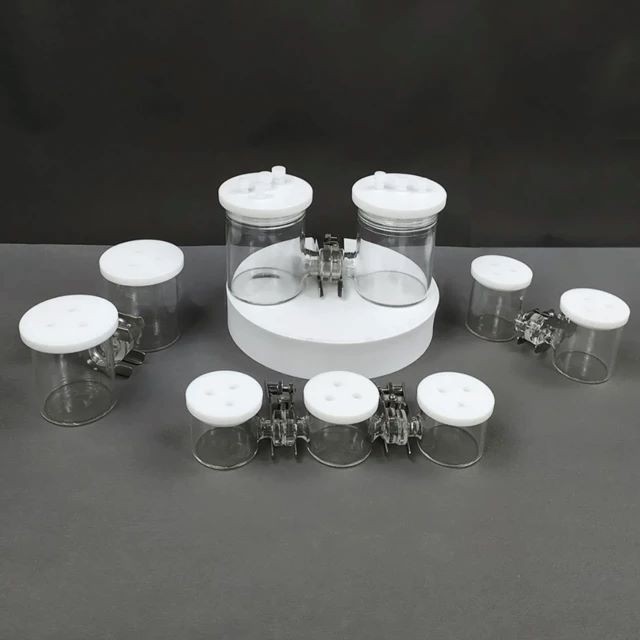
电化学消耗品
H型电解池 三电极电化学池
货号 : ELCH
价格根据 规格和定制情况变动
$69.90 - $599.90 / 套装
- 规格
- 30 毫升~ 500 毫升
- 适用温度范围
- 0 ~ 60℃
- 材料
- 硼玻璃 + 聚四氟乙烯
运输:
联系我们 获取运输详情 享受 准时发货保证.
为什么选择我们
可靠的合作伙伴简易的订购流程、优质的产品和专业的支持,助力您的业务成功。
简介
电解池是一种利用电能驱动非自发氧化还原反应的电化学电池。它由电解质和两个电极(阴极和阳极)组成。当向电极施加外部电压时,电解质中的离子会被相反电荷的电极吸引,从而发生电荷转移(也称为法拉第或氧化还原)事件。负电极称为阴极,正电极称为阳极。氧化发生在阳极,还原发生在阴极。
H型电化学电解池可以配置为带隔膜或无隔膜密封,有双电极、三电极或混合配置,H型电解池中有三个电极。
技术规格
双H型电解池
| 规格 | 30ml~ 500ml |
|---|---|
| 适用温度范围 | 0 ~ 60℃ |
| 适用隔膜面积 | 15mm (可定制) |
| 材质 | 硼硅玻璃 + PTFE |
| 电解池打孔 | 三电极孔(6mm) 四个气体(3mm)可定制开孔 |
三H型电解池
| 规格 | 30ml~ 500ml |
|---|---|
| 适用温度范围 | 0 ~ 60℃ |
| 适用隔膜面积 | 0.5cm2/1cm2 |
| 材质 | 硼硅玻璃 + PTFE |
| 电解池打孔 | 三电极孔(6mm) 六个气体孔(3mm)可定制 |
详情与部件

H型密封电解池结构

H型非密封电解池结构

PTFE型细节

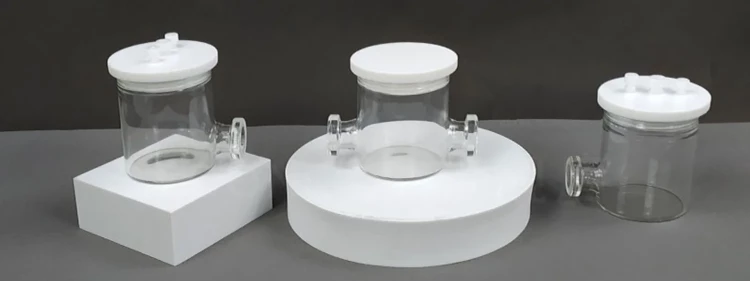

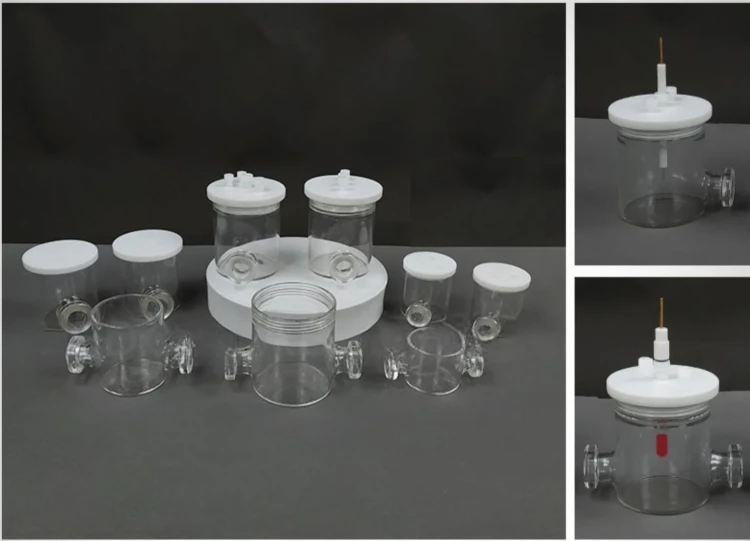
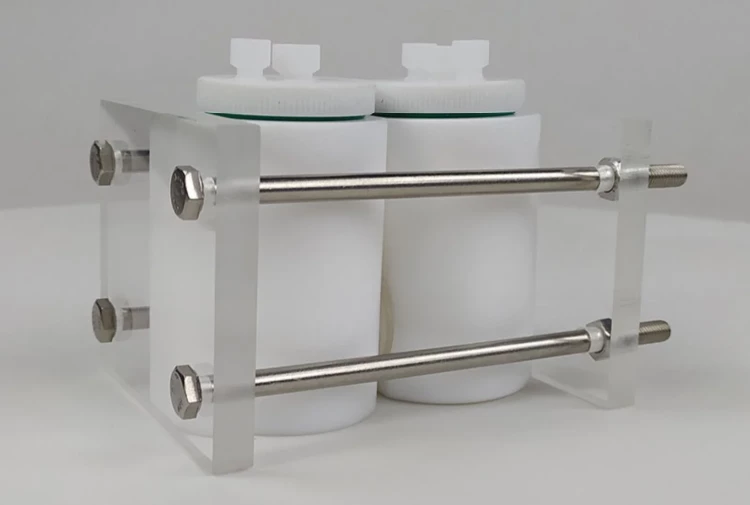

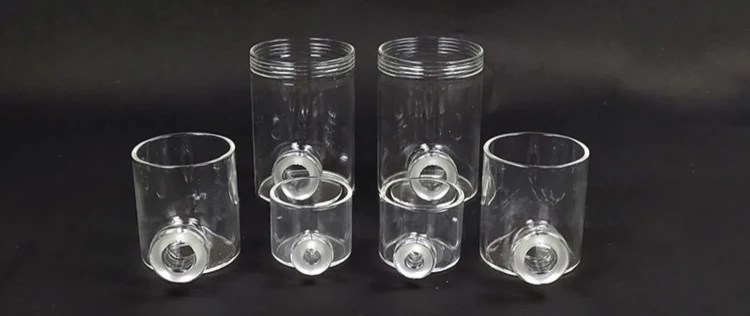
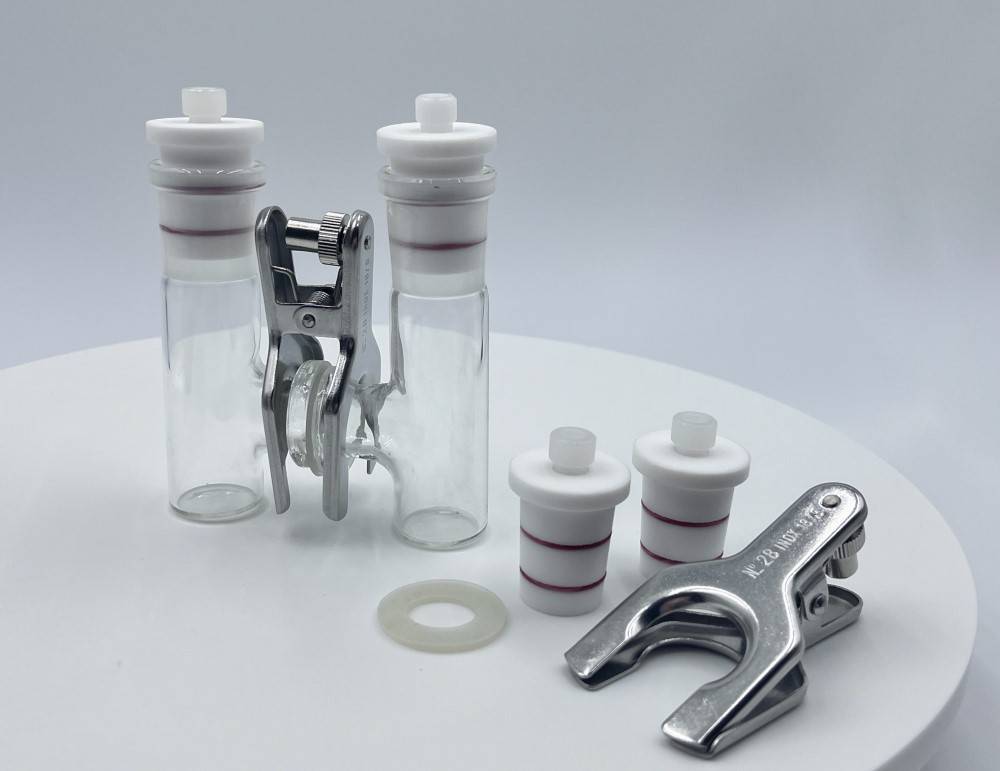
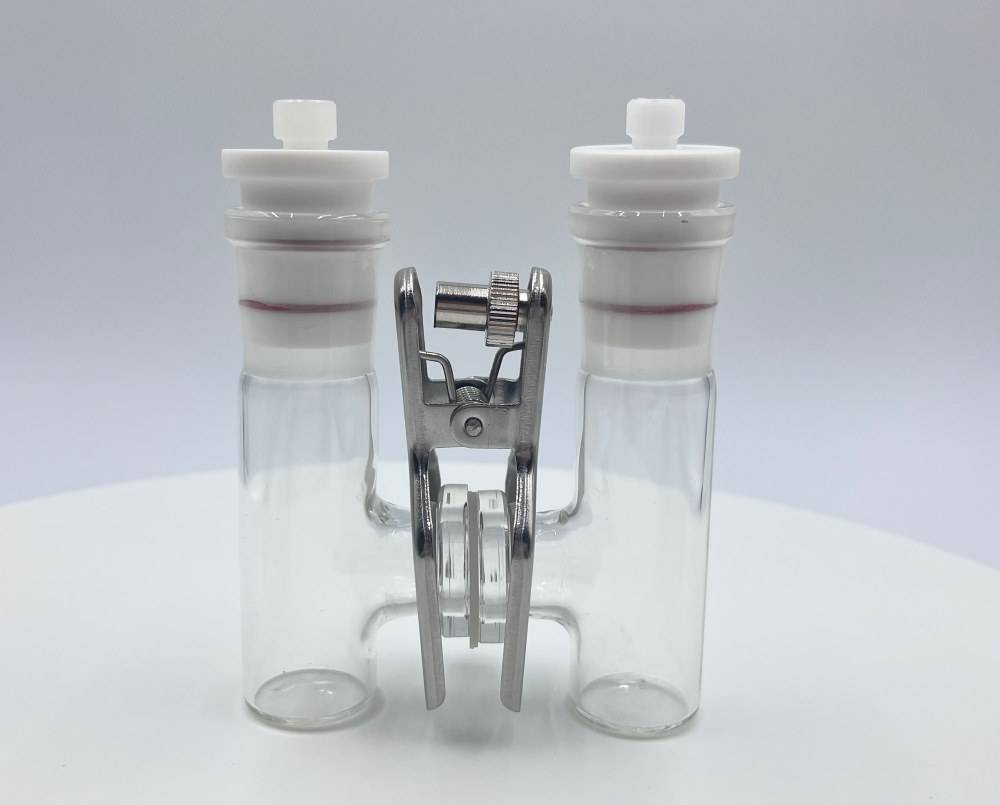

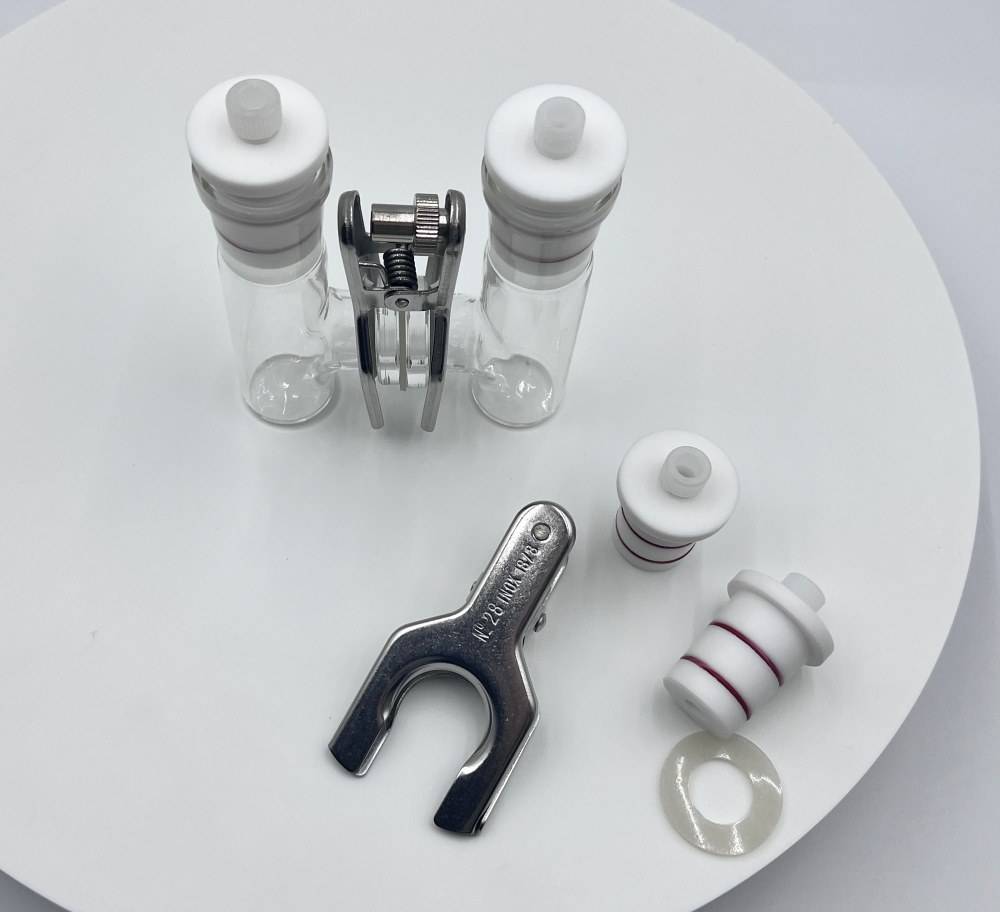

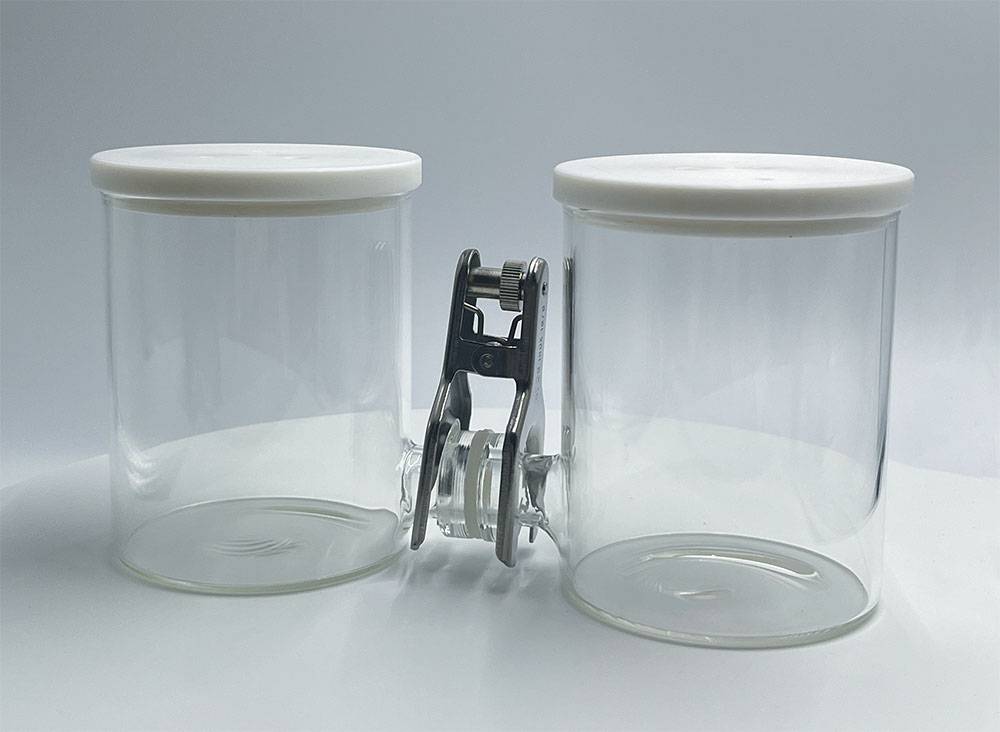
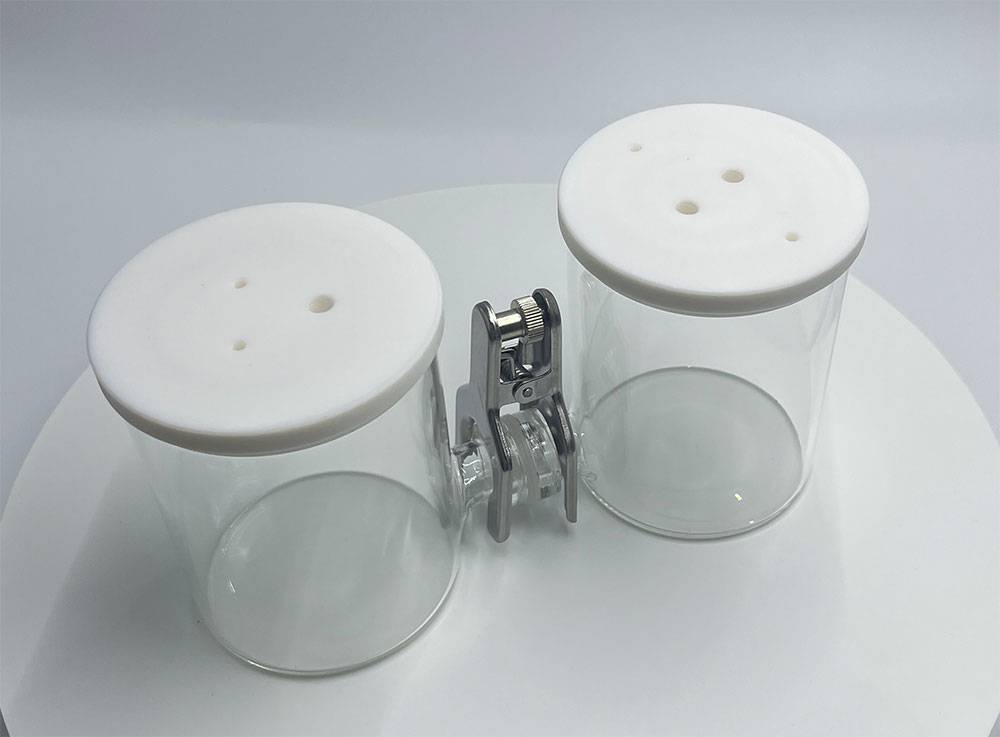
操作步骤
H型密封电解池

1. 密封的电解池由密封圈、密封塞、聚四氟乙烯盖和池体组成。
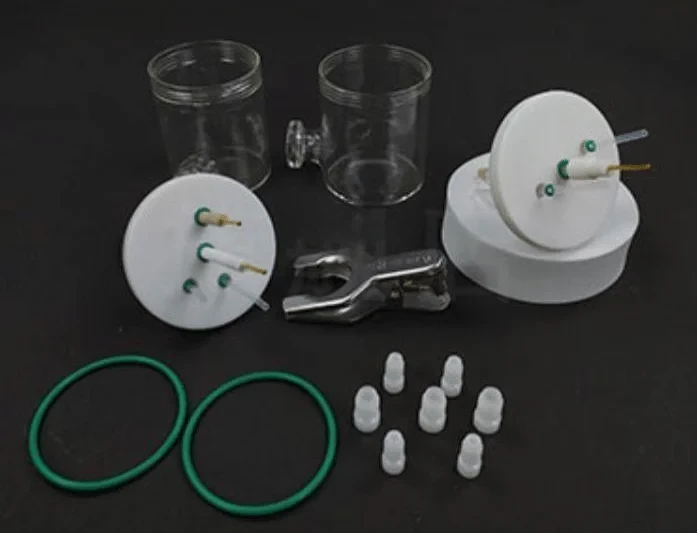
2. 安装时,将电极和气体管插入电解池,然后安装密封圈。

3. 接下来,将密封螺母安装到电极上并连接气孔,然后挤压密封圈并拧紧螺母。

4. 之后,将池密封件放置在池体上。
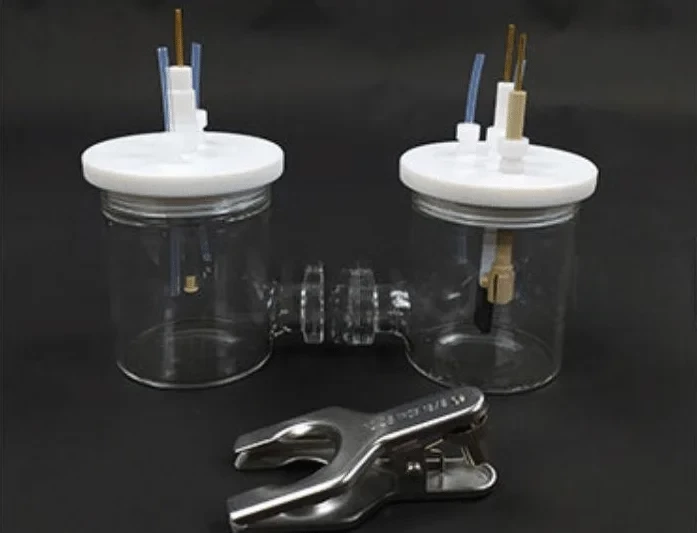
5. 最后,固定盖子。

6. 安装过程完成(通常使用三电极版本)。
H型非密封电解池

1. 将密封螺母安装到电极上并连接气孔,然后挤压密封圈并用力旋转螺母。

2. 将池密封件放置在池体上。

3. 牢固地固定盖子。

4. 安装过程现已完成(三电极版本遵循相同步骤)。
应用

为您而设计
KinTek为全球客户提供深度定制服务和设备,我们专业的团队和经验丰富的工程师有能力承担定制硬件和软件设备的需求,并帮助我们的客户 打造专属个性化设备和解决方案!
请将您的想法告诉我们,我们的工程师已经为您准备好了!
FAQ
H 型密封电解槽与非密封电解槽的区别--用途区别
H 型密封电解槽与非密封电解槽的区别--外观区别
什么是 H 型电化学电池?
辅助电极的功能是什么?
H 型电池有什么用途?
辅助电极和参比电极有什么区别?
什么是 H 型微生物燃料电池?
辅助电极常用的材料有哪些?
电解池有几种类型?
辅助电极如何影响电化学电池的性能?
什么是用于氢气渗透实验的氢电池?
为什么电化学系统需要辅助电极?
使用辅助电极时是否有任何限制或注意事项?
4.7
out of
5
The H-type electrolytic cell arrived promptly and in excellent condition. Its quality is impressive, and it has become an invaluable tool in our lab.
4.8
out of
5
This electrolytic cell has exceeded our expectations. It's durable and user-friendly, making it a great choice for our research.
4.9
out of
5
The H-type electrolytic cell has revolutionized our lab work. Its advanced technology has enabled us to conduct experiments with greater precision and efficiency.
4.6
out of
5
The H-type electrolytic cell from KINTEK SOLUTION is an exceptional piece of equipment. Its construction is solid, and it provides accurate and reliable results.
4.7
out of
5
We're thrilled with the H-type electrolytic cell. It has become an indispensable tool in our lab, and its versatility makes it suitable for a wide range of experiments.
4.8
out of
5
The H-type electrolytic cell has significantly enhanced our research capabilities. Its user-friendly design and precise measurements have made it a favorite among our team.
4.9
out of
5
The H-type electrolytic cell is a testament to KINTEK SOLUTION's commitment to quality. Its durability and accuracy have made it an essential part of our laboratory.
4.6
out of
5
We're highly satisfied with the H-type electrolytic cell. Its ease of use and consistent performance have made it a valuable addition to our lab.
4.7
out of
5
The H-type electrolytic cell has exceeded our expectations. Its innovative design and reliability have made it a game-changer in our research.
4.8
out of
5
We're impressed with the H-type electrolytic cell's durability and accuracy. It has become an indispensable tool in our lab.
4.9
out of
5
The H-type electrolytic cell is a marvel of engineering. Its precision and versatility have revolutionized our experimental procedures.
4.6
out of
5
We're delighted with the H-type electrolytic cell. Its ease of use and consistent performance have made it a favorite among our researchers.
4.7
out of
5
The H-type electrolytic cell has become an indispensable tool in our lab. Its user-friendly design and reliable results have made it a must-have for our experiments.
4.8
out of
5
We're extremely satisfied with the H-type electrolytic cell. Its durability and accuracy have made it an invaluable asset to our laboratory.
4.9
out of
5
The H-type electrolytic cell is a testament to KINTEK SOLUTION's commitment to excellence. Its innovative design and precise measurements have made it a game-changer in our research.
4.6
out of
5
We're highly impressed with the H-type electrolytic cell's performance. Its ease of use and consistent results have made it a valuable addition to our lab.
4.7
out of
5
The H-type electrolytic cell has exceeded our expectations. Its durability and accuracy have made it an essential part of our experimental setup.
4.8
out of
5
We're thrilled with the H-type electrolytic cell. Its user-friendly design and precise measurements have made it a favorite among our researchers.
获取报价
我们的专业团队将在一个工作日内回复您。请随时与我们联系!
相关产品
相关文章

H 型电解槽在金属提取中的应用
H 型电解槽使用电解质溶液溶解金属离子,并通过电流将金属离子从溶液中分离出来。

了解石英电解槽:应用、机理和优势
探索石英电解槽在各行各业中的详细工作原理、应用和优势。了解这些电解槽如何促进精确的化学反应及其在高纯度金属生产中的作用。

了解电解槽及其在铜净化和电镀中的作用
电解槽在铜净化和电镀等各种工业流程中发挥着至关重要的作用。这些电池利用外部电源驱动化学反应,从而分解物质。在电解过程中,电流通过含有离子的液体或溶液,使其分解。

精确的架构:为什么您的电解池规格比您想象的更重要
了解电解池规格背后的关键逻辑。从孔径几何形状到体积权衡,了解正确的容器如何决定实验的成功。

实验的玻璃心脏:掌握电解池
掌握电解池的操作艺术。了解物理脆弱性、化学安全性和操作精度之间的关键平衡。

无声的对话:掌控电解池的艺术
电解是一种非自发的行为,需要精确控制。学习解读电压、电流和物理现象的相互作用,以获得更安全的实验结果。

克服 H 型电解槽运行的挑战
了解 H 型电解槽的组件和操作对于生产高质量化学品和克服其操作过程中的挑战至关重要。

了解电极和电化学电池
电极是电流进出电解质的点。它是一种导体,用于与电路中的非金属部分连接。电极可以由金、铂、碳、石墨或金属等材料制成。它们是电化学电池中发生氧化还原反应的表面。电极有不同的类型,包括阳极和阴极。

电阻的艺术:为什么您的电解池需要“呼吸空间”
电解池中的短路不仅仅是意外;它们是几何结构上的失败。了解如何控制电流路径并保护您的实验室设备。

看不见的变量:掌握电解池检查的艺术
电化学的精确性始于电流流动之前。了解电解池关键的预使用检查,以确保安全和数据完整性。

电解槽在净化和电镀中的应用
电解池是利用电能产生非自发氧化还原反应的化学池。这些电池用于各种电化学过程,如电解和电镀。

电化学 电化学电池背后的科学
电化学之所以重要,是因为它有助于我们了解材料和物质在不同环境中的行为。

